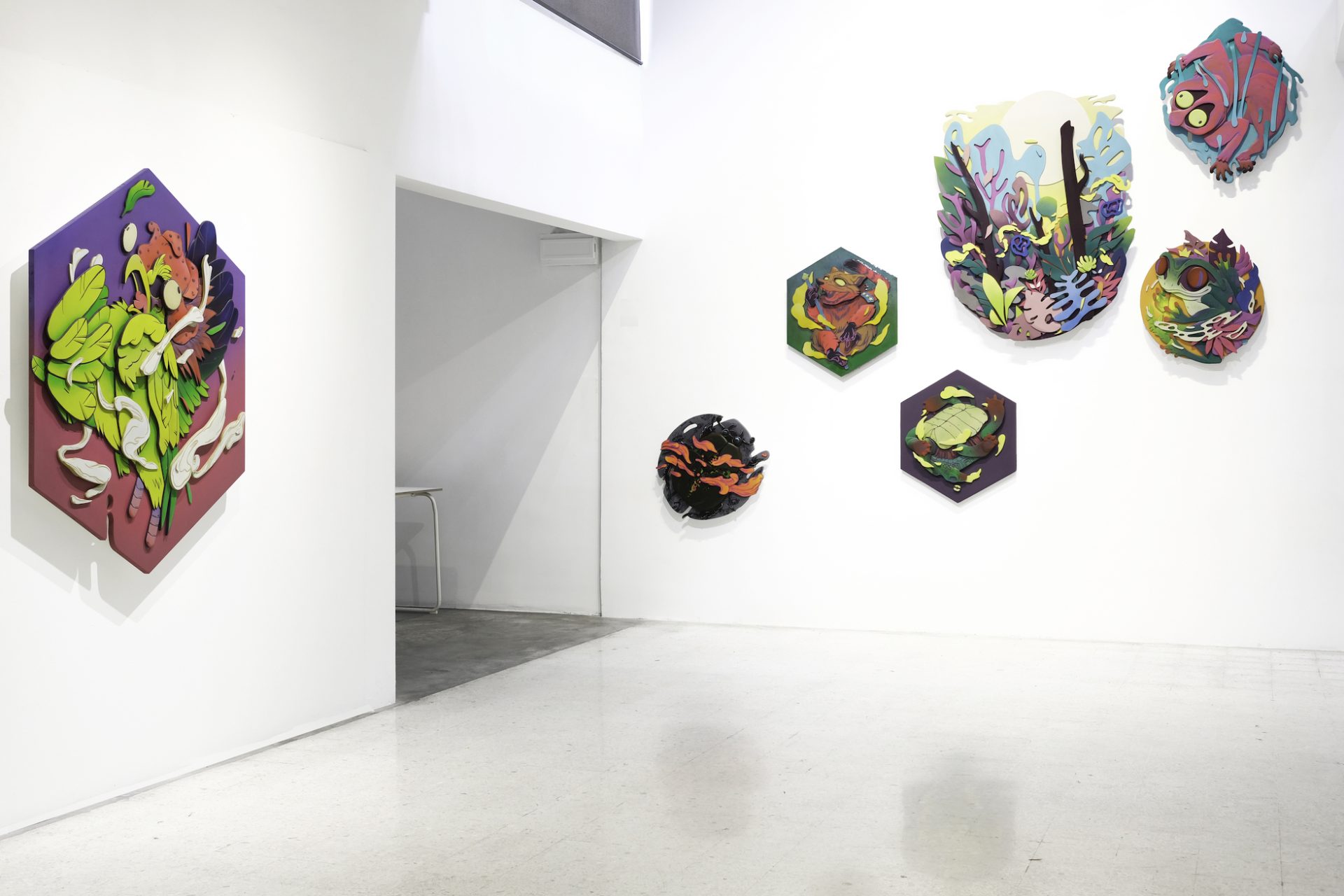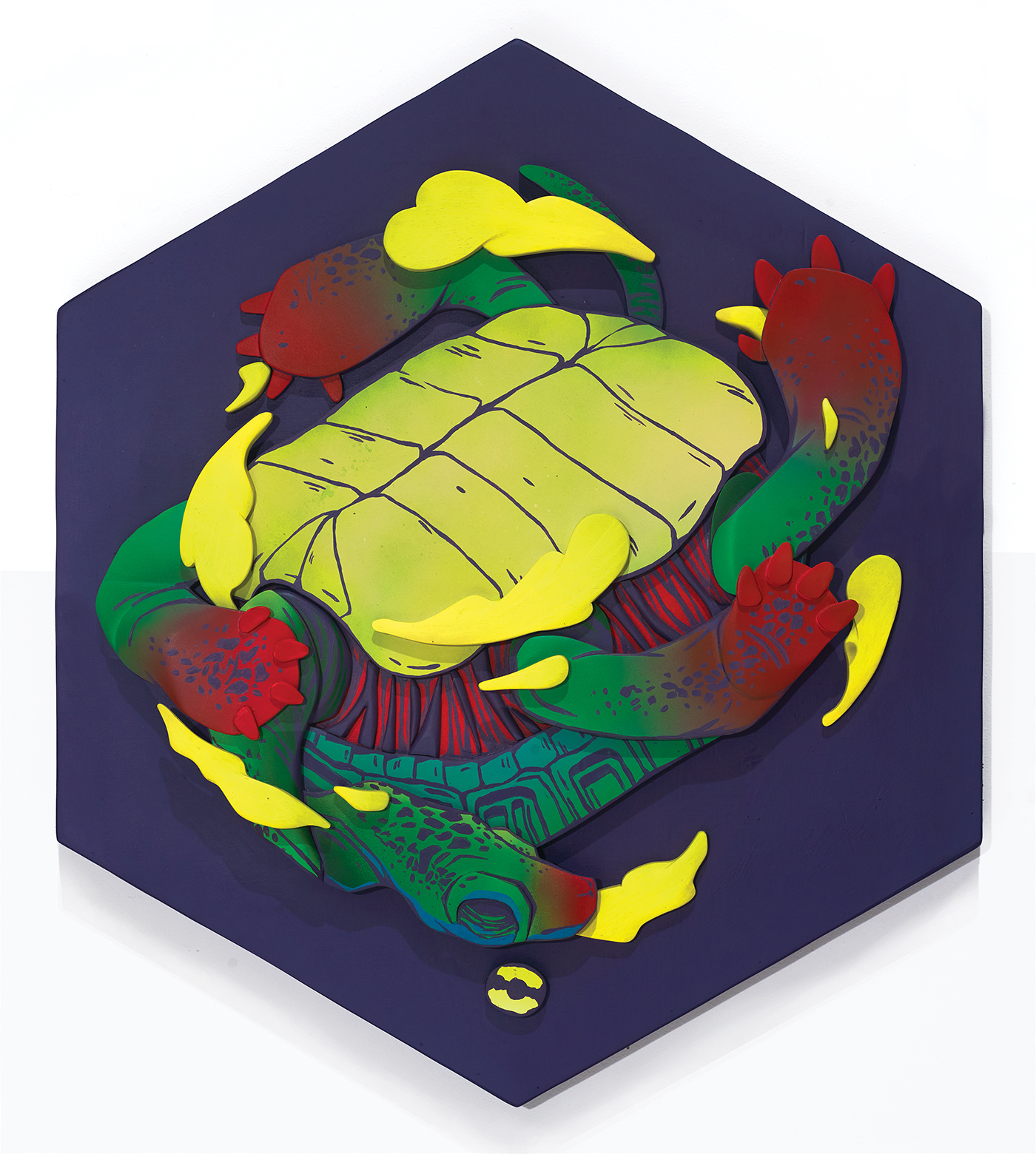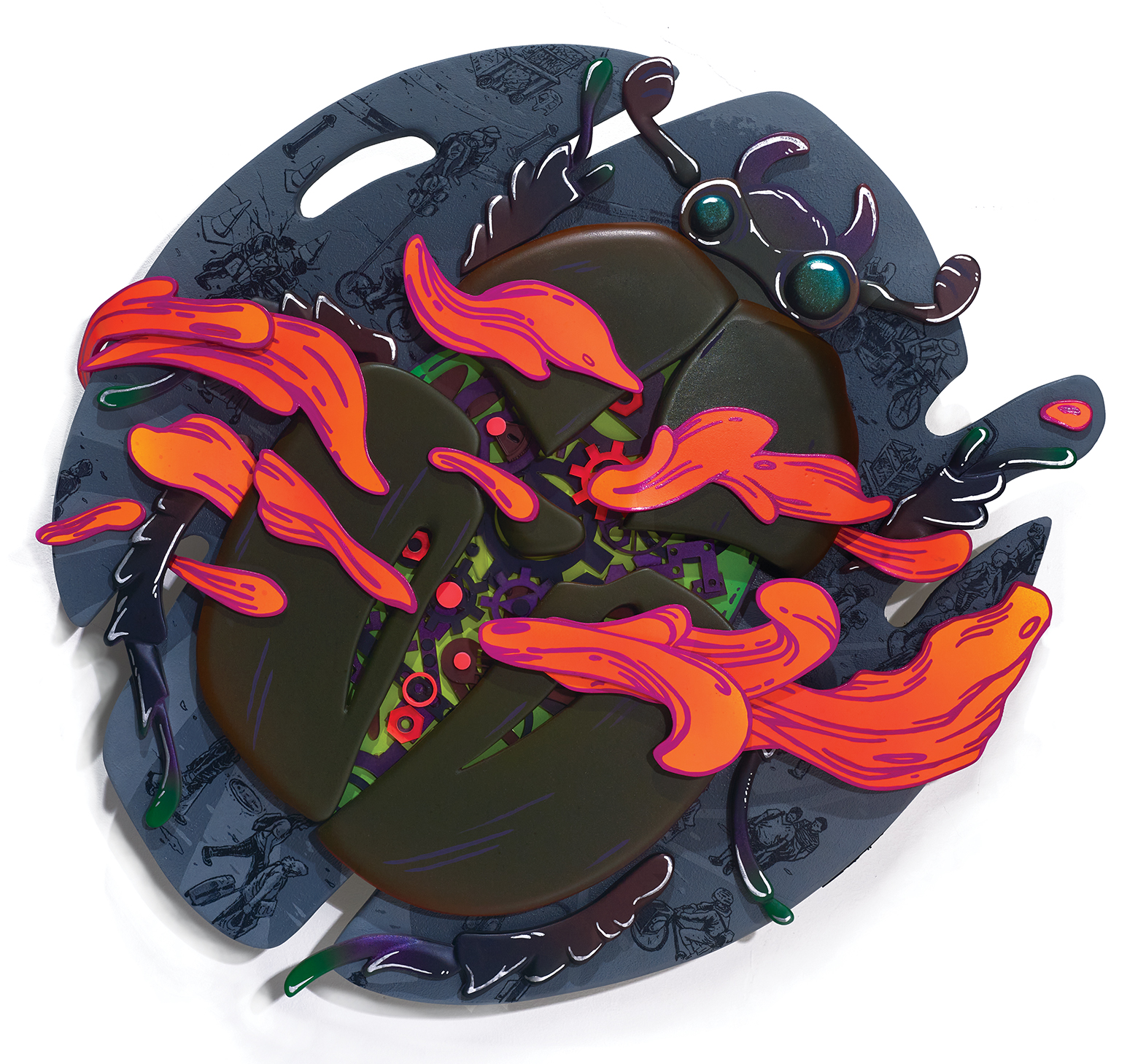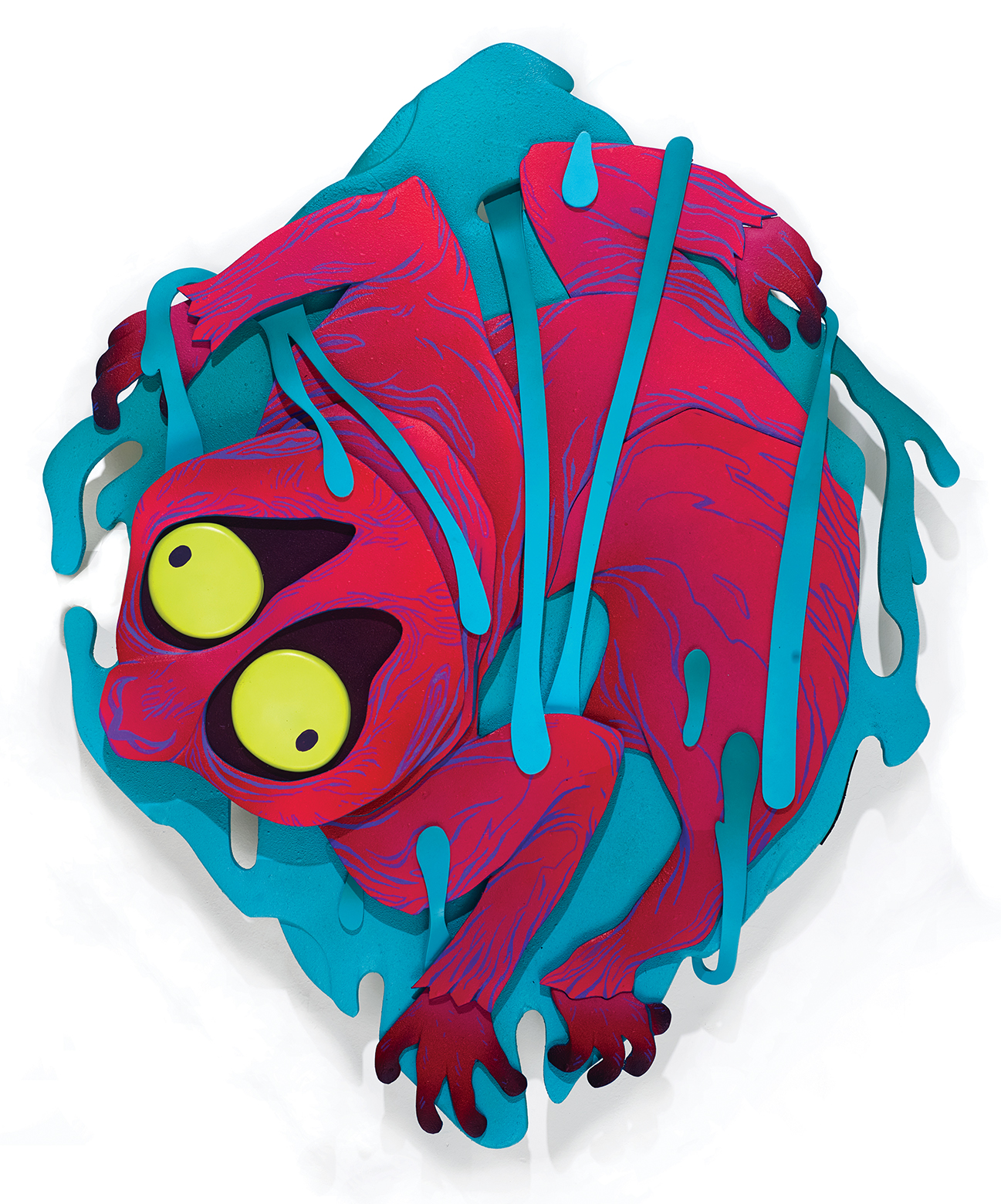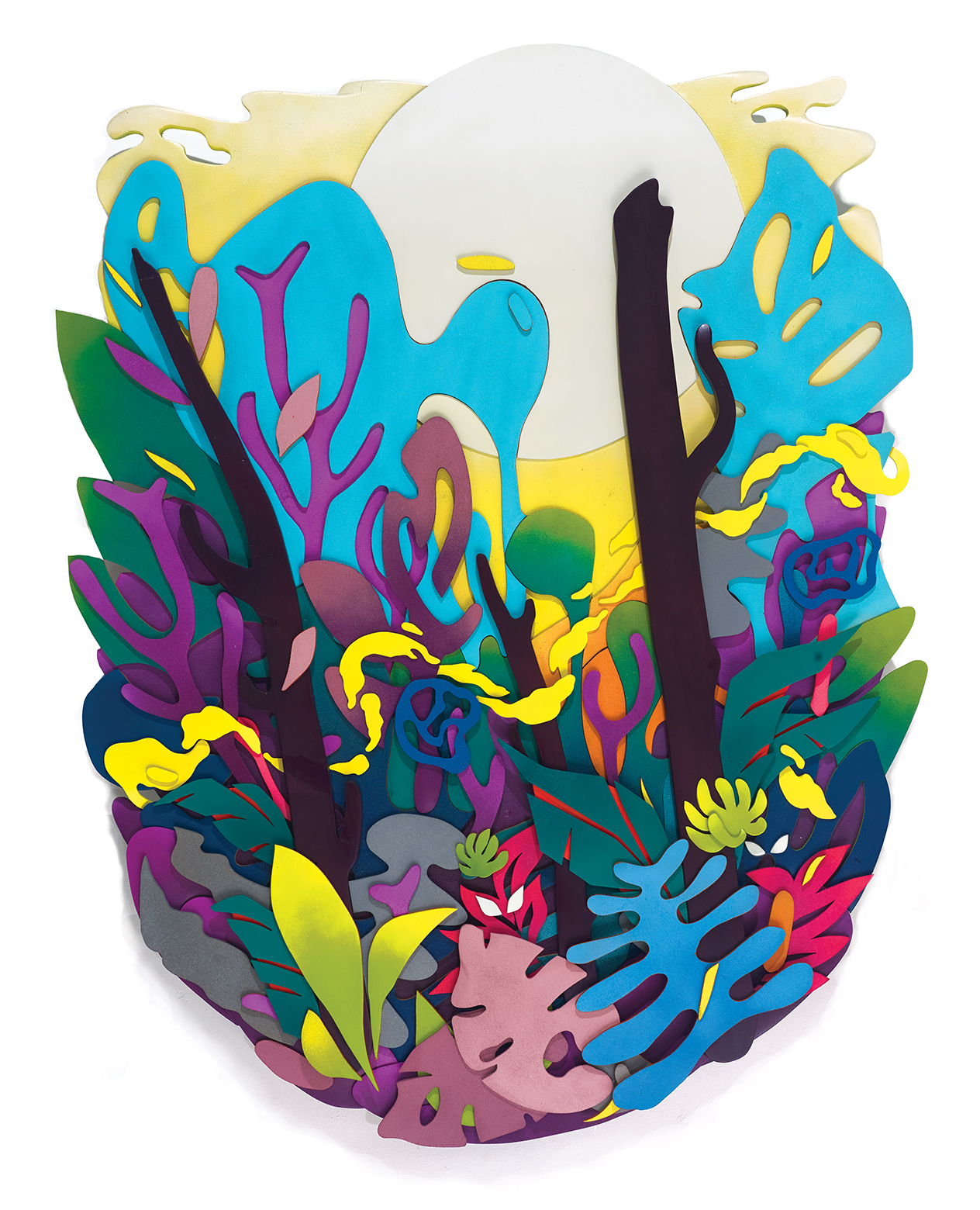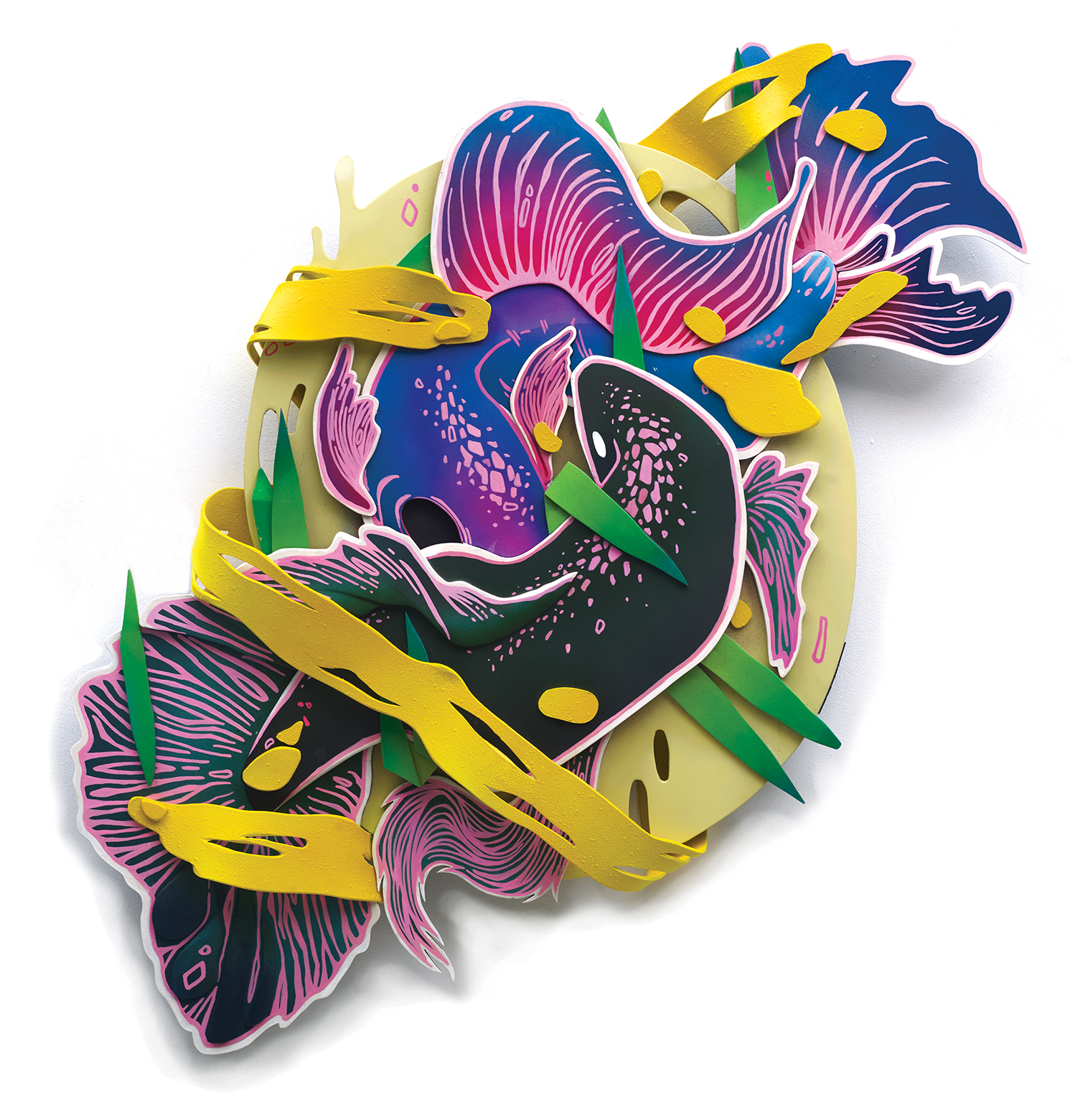Moral, Kini dan Dulu
Solo Exhibition:-
Syafiq Hariz
15th November – 15th December 2023
Core Design Gallery, Subang Jaya
*Click on images to zoom in
“Moral, Kini dan Dulu: Syafiq Hariz’s Artistic Journey Through Malay Proverbs”
By Scarlette Lee
In the vibrant realm of contemporary art, where tradition meets innovation, Syafiq Hariz emerges as a luminary artist with a penchant for societal commentary. Hailing from Muar, Johor, Malaysia, born in 1986, Syafiq Hariz has journeyed from the heart of Johor to the forefront of contemporary artistic discourse, leaving an indelible mark through his multidisciplinary talents and graphic artistry.
Artist’s Background:
Syafiq Hariz’s artistic evolution is marked by an unwavering commitment to his craft. Graduating with a Masters in Fine Art and Technology from UiTM, he garnered recognition for his dedication, receiving APF (Faculty Post-Graduate Award)) UiTM Shah Alam. In 2019, his artistic prowess was further acknowledged when he received an Honorable Mention for Asia Illustrations Collection 2018, Shanghai Hongqiao Contemporary Art Museum, China.
Distinctive Artistic Approach:
What sets Syafiq’s work apart is his profound exploration of contemporary issues through the lenses of cynicism and satire. His art delves into the repercussions of excessive pop culture consumption, shedding light on the far-reaching implications for society’s long-term well-being.
Concept of the Exhibition:
In “Moral, Kini dan Dulu,” Syafiq Hariz’s latest solo exhibition, he plunges deep into the heart of Malay culture and wisdom. Proverbs, concise expressions of profound wisdom, serve as the bedrock of his artistic exploration. This journey was fueled by extensive research during his Masters program, culminating in a series of mixed-media, pop-illustrative works that ingeniously reimagine Malay proverbs in a contemporary context.
Malay proverbs are a repository of figurative language brimming with profound meanings and insights. Passed down through generations, these proverbs have functioned as tools of satire, critique, and moral instruction. They offer a window into the social values, ethics, and customs that have shaped communal life in Malaysia, embodying the essence of Malay philosophy. Syafiq’s artistic odyssey aims to translate this rich tapestry of Malay thought, embodied in these proverbs, into a visual language.
Artistic Narrative:
Syafiq Hariz’s artistic journey is deeply rooted in his formative years. Growing up in the 1980s, he was profoundly influenced by Malaysian cartoons produced by Filem Negara Malaysia, such as “Hikayat Sang Kancil.” Beyond being a source of entertainment, these cartoons provided invaluable moral education. Simultaneously, Malay proverbs were a common means through which parents imparted life lessons and wisdom.
With “Moral, Kini dan Dulu,” Syafiq Hariz endeavors to recreate the nostalgic and educational experience of his childhood. “Terlaksana,” a jungle-like work, can be considered the culmination of his artistic journey. Creating a multilayered artwork of a jungle-like scene with subjects that mimic nature signifies the completion of a job done perfectly, inspired by the Malay proverb “the forest has grown, the tree has grown upright.” Each layer of the artwork represents the complexity and beauty of nature, reflecting the intricate layers of life itself.
The jungle-like setting symbolizes the untamed and wild aspects of existence, while the subjects that mimic nature serve as a reminder of the interconnectedness between humanity and the natural world. Through this artwork, the artist aims to convey a sense of harmony and balance, echoing the profound wisdom encapsulated in the Malay proverb that inspired this piece. “Terlaksana” as the main piece is surrounded by imagery such as sloth, tortoise, fox, frog, and beetle that evoke the essence of 1980s cartoons like “Hikayat Sang Kancil,” serving as a bridge connecting past and present. These visuals, juxtaposed against his mixed-media artworks, exemplify how Malay proverbs have transcended time, remaining as relevant as ever in contemporary society. Syafiq’s art not only reflects his personal journey but also extends an invitation to rediscover the enduring wisdom within Malay proverbs and their timeless moral teachings.
Interpreting Proverbial Metaphors:
In Malay proverbs, animals frequently serve as metaphors conveying profound meanings, functioning as parables or metaphors. These proverbs encapsulate Malay thought across five philosophical categories: metaphysics (thinking about existence), epistemology (thinking about knowledge), ethics (thinking about human morality), logic (thoughts about human reasoning in this world), and aesthetics (thoughts about beauty).
Syafiq Hariz masterfully interprets these metaphors, employing a meticulous creative process that seamlessly integrates the central idea, chosen forms, and content into each artwork. Several examples include:
- Apa faedah?:
- Essence: This artwork featuring a frog within its natural habitat, surrounded by lush leaves and water, is a visual representation of the Malay proverb “Alim bagai katak di tepi air”. This proverb conveys the idea that an individual may possess a wealth of knowledge, yet fail to derive any benefit from it.
- Desas Desus
- Essence: Based on a Malay proverb that says “Indah khabar dari rupa”, which means “exaggerated news about something. The spinning tortoise is exaggerated to represent an extraordinary promise made by a politician seeking a mandate.
- Essence: Based on a Malay proverb that says “Indah khabar dari rupa”, which means “exaggerated news about something. The spinning tortoise is exaggerated to represent an extraordinary promise made by a politician seeking a mandate.
- Gentar
- Essence: This artwork, featuring a beetle with partially opened wings against a backdrop of bustling pedestrians, reflects the Malay proverb “Seperti pucuk ru, ke bawah tiada berurat, di tengah-tengah dilarik kumbang.” The proverb encapsulates the idea that circumstances are not always guaranteed and can change unpredictably over time.
- Essence: This artwork, featuring a beetle with partially opened wings against a backdrop of bustling pedestrians, reflects the Malay proverb “Seperti pucuk ru, ke bawah tiada berurat, di tengah-tengah dilarik kumbang.” The proverb encapsulates the idea that circumstances are not always guaranteed and can change unpredictably over time.
- Semua untuk Engkau!:
- Essence: Inspired by the Malay proverb “Agih-agih Kongkang,” this piece conveys the idea of being overly generous to the point of encountering trouble. The sloth, known for its slow and deliberate movements, becomes a symbol of generosity taken to an extreme.
- Essence: Inspired by the Malay proverb “Agih-agih Kongkang,” this piece conveys the idea of being overly generous to the point of encountering trouble. The sloth, known for its slow and deliberate movements, becomes a symbol of generosity taken to an extreme.
- Si Licik!:
- Essence: Illuminates the concept of deceit through the adaptation of the proverb “Musang berbulu ayam,” warning against those who feign goodness to conceal malevolent intentions.
- Essence: Illuminates the concept of deceit through the adaptation of the proverb “Musang berbulu ayam,” warning against those who feign goodness to conceal malevolent intentions.
- Terlaksana
- Essence: Drawing inspiration from the Malay proverb “Hutan sudah terambah, teratak sudah tertegak”, signifying the completion of a job done perfectly. Each layer of the artwork represents the complexity and beauty of nature, reflecting the intricate layers of life itself
- Aku yang konsisten:
- Essence: Grounded in the Malay proverb “Jangan Sangat Pemilih, takut terkena buku buluh,” this piece encourages viewers to embrace the process of creation with openness and dedication rather than being overly selective or perfectionistic.
- Essence: Grounded in the Malay proverb “Jangan Sangat Pemilih, takut terkena buku buluh,” this piece encourages viewers to embrace the process of creation with openness and dedication rather than being overly selective or perfectionistic.
- ‘Dia Baham Je!!’:
- Essence: Reflects on the lasting impact of human actions on one’s life history, emphasizing the significance of ethical choices. The proverb “Adakah buaya menolak bangkai?” reinforces that an opportunity can bring out the evil in anyone.
- Essence: Reflects on the lasting impact of human actions on one’s life history, emphasizing the significance of ethical choices. The proverb “Adakah buaya menolak bangkai?” reinforces that an opportunity can bring out the evil in anyone.
- “Dia kelaut, Kau pun kelaut!”:
- Essence: Addresses concerns about cultural degradation, highlighting the uniqueness of each nation’s customs and practices. The proverb “Lain lubuk, lain ikannya” underscores the impact of cultural diversity on values and societal cohesiveness.
- Essence: Addresses concerns about cultural degradation, highlighting the uniqueness of each nation’s customs and practices. The proverb “Lain lubuk, lain ikannya” underscores the impact of cultural diversity on values and societal cohesiveness.
- Menggapai:
- Essence: Derived from the Malay proverb “Gajah lalu dibeli, kosa tidak terbeli,” this artwork highlights how the success of larger endeavors is often overlooked or undervalued.
- Essence: Derived from the Malay proverb “Gajah lalu dibeli, kosa tidak terbeli,” this artwork highlights how the success of larger endeavors is often overlooked or undervalued.
- Semuanya Kau Lah!:
- Essence: Explores the fine line between genuine confidence and overconfidence, inspired by the proverb ‘Mendabik dada,’ which denotes a person showcasing their abilities to empower others.
- Essence: Explores the fine line between genuine confidence and overconfidence, inspired by the proverb ‘Mendabik dada,’ which denotes a person showcasing their abilities to empower others.
- Tukar Angin
- Essence: The Malay proverb “Jangan disangka ikan lais tidak menyengat”, challenges the assumption that the weak are harmless. Even those in disadvantaged positions can disrupt the status quo, cautioning against underestimating anyone based on appearances.
- Essence: The Malay proverb “Jangan disangka ikan lais tidak menyengat”, challenges the assumption that the weak are harmless. Even those in disadvantaged positions can disrupt the status quo, cautioning against underestimating anyone based on appearances.
In conclusion, “Moral, Kini dan Dulu” is a testament to Syafiq Hariz’s artistic prowess and his ability to weave intricate narratives through the fusion of traditional wisdom and contemporary art. This exhibition pays homage to Malaysia’s rich cultural heritage while challenging viewers to contemplate the moral fabric of their own lives, both past and present.
